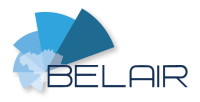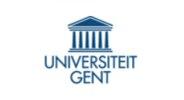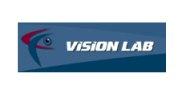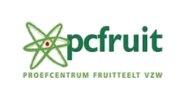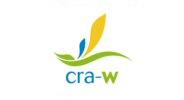1. Focus on Optimizing Fruit Orchard Management
Objectives
The main aim of the project is to improve the monitoring, steering and managing of capital intensive perennial fruit orchards by remote sensing.
Specific objectives to address this goal are (1) hyperspectral vegetation stress detection at field, airborne and spaceborne scale, and multitemporal unmixing from airborne and spaceborne imagery (VITO), (2) virtual orchard modelling to validate biophysical processes in a controlled environment and to mimic characteristics of future satellites, such as Sentinel-2 (KUL), (3) investigation into thermal and fluorescence data for stress detection at field and airborne scale (UGent), (4) chlorophyll fluorescence image analysis combined with fast fluorescence induction kinetics and quenching analysis of vegetation (UHasselt), (5) user need definition and sharing of fruit orchard expertise (PcFruit), and (6) algorithm development, data and decision fusion techniques (UA).
Executive Summary
The potential yield is rarely attained in crop production systems due to physiological limitations and impacts of biotic and abiotic stress factors. A sub-optimal yield implies a vast economic loss, especially in capital-intensive multi-annual crop systems. The development of efficient management strategies is therefore endeavored, which demands an accurate monitoring of the impact of the damaging factors. This is however not straightforward since the symptom distribution following a given stress varies according to foliage exposure, species and foliage physiological characteristics. Another issue lies in identifying the causal agent of stress symptoms since different kinds of stress inductors (e.g. ozone, heavy metal pollution and drought) cause many similar biochemical changes. The temporal dimension is therefore often indispensable to distinguish stresses (e.g., varying climatological conditions, phenological phase). Proper understanding of plant physiological processes in relation to the environment is as such essential to enable early detection and more time and site-specific treatment against production limiting factors, with the goal of optimizing yield. Due to the intensification of agriculture and the response of plants to environmental variables that vary on fine scales, specialized techniques are needed that retain the benefits of large-scale monitoring, but recognizes local variation, i.e. site-specific stresses. Non-intrusive techniques are therefore essential for capturing data in a continuous manner, thereby enabling rapid response and minimized unintentional impacts. Moreover, these techniques have to allow a presymptomatic monitoring of changes in the plant physiological state since by the time that the first visible symptoms of stress can be observed, a plant can already be adversely affected. Spectral reflectance, chlorophyll fluorescence, and thermography are currently the most advanced techniques to detect early signs of stress.
However, in spectral remote sensors, usually a trade-off exists between SNR, spatial and spectral resolutions due to physical limitations, data-transfer requirements and some other practical reasons. High potential therefore lies in the fusion of multiple data sets from different sensors which combines complementary information of the same scene or identical information with complementary spatial domain or with a better temporal description.
Approach taken
Due to the common interest of all groups joining this fruit orchard proposal, we propose the Proefcentrum voor de Fruitteelt in St. Truiden as super site for regular flight campaigns and in-situ data capturing.
- The team of prof. dr. Roland Valcke has a lot of expertise in fluorescence imaging. They are interested in performing chlorophyll fluorescence imaging further supported by supplementary in situ measurements such as fast fluorescence induction kinetics and quenching analysis in the fruit orchards of interest.
- Prof. dr. ir. Kathy Steppe is well-known for the use of advanced on-plant sensors for early drought stress detection. In this project, stem diameter variation sensors and point fluorescence LICOR instruments will be put available to add to the in-situ database of this PcFruit supersite. In addition, she and the postdoctoral researcher of her team, dr. ir. Wouter Maes, are recognized for their thermal research to remotely sense plant stress. They will simultaneously capture thermal imagery through their own UAV drone together with the UAV and APEX campaigns.
- Prof. dr. ir. Pol Coppin has two PhD students working on the optimization of the fruit orchard management. Ir. Jonathan van Beek is specialized in high spatial resolution images for optimized irrigation management and detection of stress in pear and apple orchards, while ir. Laurent Tits has a large expertise on the extraction of biophysical variables and vigour status in orchards through unmixing algorithms of mixed pixels (https://lirias.kuleuven.be/cv?u=U0016705). The main research interests of dr. ir. Ben Somers include agricultural and ecological applications using spectral unmixing of high spectral and high temporal resolution imagery. The UAV dataset would serve as a perfect tool to validate the unmixing algorithms applied on APEX and satellite imagery. In addition to field hysperspectral data, this team will use a virtual orchard model to validate biophysical processes in a controlled environment and to mimic the spectral characteristics of future spaceborne sensors such as Sentinel 2.
- The VITO Centre for Remote Sensing and Earth Observation Processes (TAP) nowadays has obtained regional, national and international respect with regard to global vegetation monitoring (VITO TAP is the coordinator of the SPOT VEGETATION Production Entity), high resolution imaging spectroscopy (VITO TAP is the APEX operator for ESA), and the development of innovative earth observation solutions (VITO TAP is the owner and operator of several unmanned airborne systems (UAS)). As part of VITO TAP, the Hyperspectral Research Group) develops several applications based on imaging spectroscopy. Over the years, researchers within the group also built valuable expertise in calibration, atmospheric and geometric corrections of hyperspectral data. Dr. ir. Kris Nackaerts has built an expert system for precision agriculture translating spatio-temporal terrestrial (spectral) measurements into decision support information. He has also developed an in-depth knowledge on photogrammetry, necessary for processing a wide range of imaging data. Dr. ir. Stephanie Delalieux has a lot of know-how in biophysical parameter estimation of vegetation using vegetation indices and radiative transfer modelling. Her focus lies on nature and precision farming applications using high spectral and spatial resolution imagery. The research of dr. ir. Marian-Daniel Iordache is focused on hyperspectral unmixing, with emphasis on the sparse characteristics of the solutions. A well documented and reliable ground dataset, UAV imagery incl., as would be feasible by the BelAir initiative will be of large interest for the validation of these techniques. (http://publications.vgt.vito.be)
This team will gather hyperspectral ground reference data, GPS data and reference measurements to add to the database. The added value of the combination of temporal and spectral information for the detection of stress will be investigated by the researchers.
- Bringing the different expertise and techniques together requires also a research group with expertise in data and decision fusion in order to get the most detailed information possible from the different sensors. The team of Prof. dr. Paul Scheunders focuses on the development of new techniques of hyperspectral data processing and analysis (a.o., classification, image and decision fusion, spectral unmixing).
- The knowledge on the user needs is indispensable and will be provided by the fruit experts working at PcFruit. Dr.ir Tom Deckers has, as head of the department of pomology, a lot of experience in fruit orchard management, and disease detection. For years, Hilde Schoofs has been working on fire blight infection understanding and detection and has been given advice to fruit growers. They work closely together with the fruit growers and are they are well aware of the user needs.
A detailed description on the health state of the plants will be provided by them.
Expected outcome
This project will give insight in the way how remote sensing data can help to better monitor, steer, and time and site specific manage fruit orchards. Based on multitemporal, high spatial, spectral and thermal images and fusion thereof, more detailed maps of the vegetation health status will become available. We would like to take advantage of this BelAir inititaive to build a strong future collaboration with all involved project partners.
Data acquisition
Satellite data purchased by BELSPO (Pléiades, ASTER, DMC, ...) remain property of BELSPO as stipulated in the contract letters SR/XX/168 (BELAIR HESBANIA), SR/XX/169 (BELAIR LITORA) and SR/XX/170 (BELAIR SONIA)
Airborne APEX & UAV (RGB, thermal, tetracam) imagery acquired over HESBANIA, LITORA and SONIA and in-situ data are released stepwise, depending on user type:
All Remote Sensing (RS) data immediately and free-of-charge available to all participating Users. In-situ field data available upon request to the owner of the data, i.e. to the lab which actually acquired the field data
Two years after delivery of the APEX data to the PI, all BELAIR data available to the entire international Scientific Community. The APEX data was delivered to the PI in January 2014.
2. Focus on Crop Monitoring from Parcel to Local and Regional Scale
Objectives
Use of UAV images combined with high resolution satellite images for crop monitoring and anomaly detection in support of precision agriculture and local to regional crop monitoring practices.
Executive Summary
The idea builds further on the Stereo-II ADASCIS project and aims to further improve the developed methodology in 3 ways:
(i) by using frequently available high resolution images instead of low/medium images for crop monitoring and damage assessment at local and regional scale. The outcome would consist of geo-referenced images with vegetation index values and derived anomaly maps for the dates for which high resolution images would be available. To validate the results these maps could be compared with traditional in-situ data collected on crop state, development, yield and possible yield reduction factors. Image processing (with existing processing chains), image analysis as well as the field work could be done by VITO (field work possibly in collaboration with the frozen vegetables industry who manages many fields in the area of interest).
(ii) by using UAV imagery it would be possible to study intra-field variability. This work could be used in support of precision farming, whereby the farmer tries to respond to such intra-field variations by variable rate application of pesticides, fertilizers and irrigation to maximize yields. CRA-w not only has experience in this domain, they also manage trial fields which could be monitored extensively, for instance to study the effects of various nitrogen fertilization rates.
(iii) the fusion of detailed spatio-temporal datasets for a specific study area will allow a sensitivity analysis of the input parameters of the current B-CGMS model operated by CRA-w.
Data acquisition
In–situ
The following parameters were measured between 11/06 and 25/07/2013 for 2 potato varieties (Charlotte and Bintje) on a CRA-w trial field in Gembloux (site de l’Hostellerie), where different N-fertilizer application rates (0, 50, 100, 150, 200 et 250 kg N/ha) were applied (split-plot trial with 4 repetitions):
- Transmittance measurements with a SPAD/HNT chlorophyll meter (Yara, Oslo, Norway)
- Reflectance measurements with a Cropscan radiometer (Cropscan Inc, Rochester, USA)
- Hemispherical photographs to estimate LAI (Leaf Area Index)
In addition crop samples were taken (8 plants per parcel from the 4 central lines). These samples were cleaned, dried and mixed and analyzed with a near infrared spectrometer to determine nitrogen concentration and nitrogen export of the different parts of the plant.
UAV
- UAV flights took place on 02/07/2013 and 08/07/2013.
Airborne
- Hyperspectral APEX images of Hesbania were acquired on July 7th 2013. Quicklooks will be available from http://www.apex-esa.org/content/quicklooks.
Satellite
- Aster (cloud free image taken on 07/10/2013)
- DMC (cloud free images taken on 07/07/2013, 23/07/2013, 01/08/2013 and 21/08/2013)
